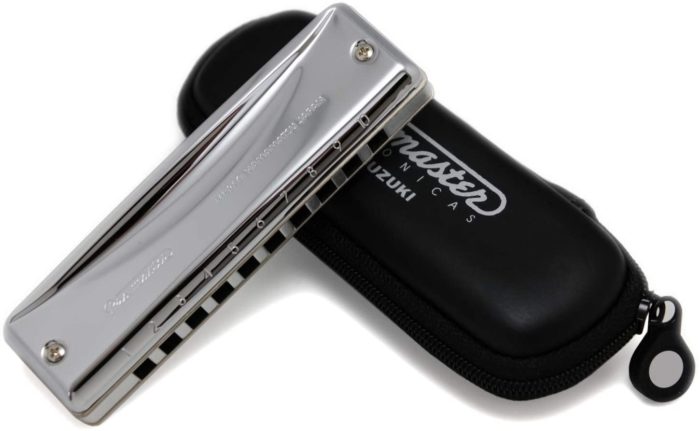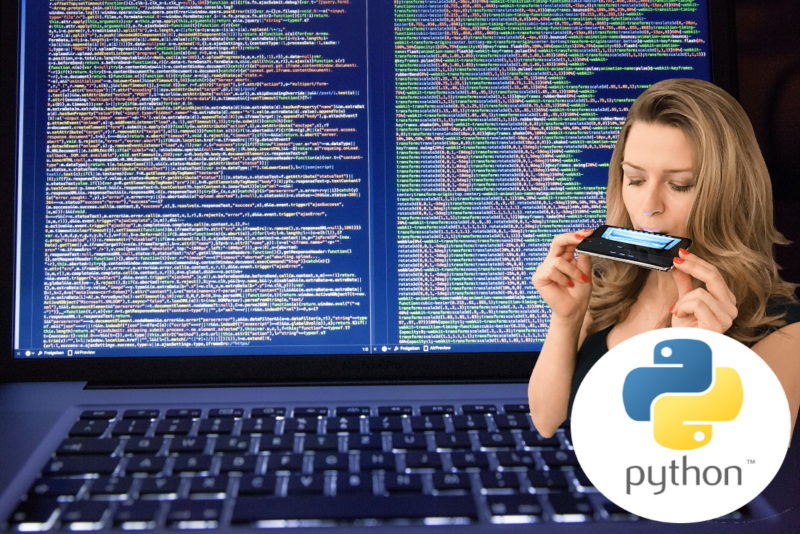As an Amazon Associate I earn from qualifying purchases.
Python script can be used to play Harmonica music, but how is this possible? Python is a programming language and often considered to be a scripting language, but can play and record sound. Modules are contained within the script and it’s those modules that create the sound and enable you to play audio files, such as wav and mp3. If you want to use Python to create harmonica, or indeed any type of music, the sound module has to be installed. This must be installed before the scripting module is used.
Here, you can learn to play sound by installing the various Python modules.
Audio Programmers and Python Audio Apps
Python apps are used to create a range of sounds and can be used in a variety of settings. Apps are utilized by audio programmers who primarily create music for digital games. Programmers create, process and store, and deal with the playback of music and sound effects in games. Programmers create utilities to support music and sounds in a software program or game. Having a vast understanding and technical knowledge of computer programs is essential for programmers and Python audio programmers need to be well skilled to perform their jobs successfully.
Programmers have the duty to create sounds that runs (and plays) smoothly and music must be integrated to ensure the experience is enhanced for the player. However, audio programmers may also develop software and audio components; they work alongside audio production departments and deal with mixing and playback. Programmers have to be well skilled and understand the basic principles of audio programming. Essentially, programmers must have an aptitude for math and physics to properly develop and create sound with Python programming apps.

Synthesize Harmonica Sounds with Python’s Music Programming Scripts
- Pydub
This is a high-level interface that is easy to use and offers a programmer-friendly interface. It’s influenced by JQUERY and based on FFMPEG. Pydub can be used to add sound effects to digital games and manipulate audio. It can be used to add id3 tags, concatenating audio tracks, and slicing audio too. Pydub supports a range of Python versions, including 3.2, 3.3, 2.6, and 2.7.
- Audiere
This plays MP3, uncompressed wav and S3M; it can also run IT files, FLAC, AIFF, and MOD, and is a high-level audio API. Audiere is compatible with Linux and Cygwin OSS, Windows WinMM and DirectSound, and IRIX SGI AL. It has also been tested on a variety of Operating Systems such as Windows and Linux, and it’s classed as open-sourced software.
- G-Streamer Python Bindings
This supports many Python music programs, including non-linear editing, video processing, audio mixing and playback, as well as audio and video streaming. G-Streamer Python Bindings supports simple and complex programming steps, making the app more versatile. With advances in filter technology and codec, the app can include plug-ins with a simple interface. Developers can add new filters and make audio cleaner and sharper.
- Improviser
This is an open-sourced music programming tool. Improviser is written in Python and works in real-time, and makes user uploads simple. The app allows you to view fellow programmer’s music and even download it. You can enjoy harmonica sounds with Improviser’s Python music software. You can create blues harmonica sounds with this app and it’s incredibly easy to use.
- Python Musical
Python Musical is, essentially, a library. It’s a library for playback, music theory, and synthesis; however, there are many filters to choose from. There is also an audio wave generator collection to search through. Python Musical also offers a library built for scales, handling notes and chords, and can play, load, and save audio too.
- Loris
Widely used with scripting languages, including Python language, Loris creates extension modules for wrapper codes and digital sounds. It’s a C++ class, open-sourced library and deals with the synthesis and manipulation of digital music or sounds. It also implements analysis of those sounds. Loris utilizes a Reassigned Bandwidth-Enhanced Additive Sound Model and makes it a unique programming app. It can support modified synthesis and frequency and time-scales. Loris also deals with sound morphing.
- Music Kit
This is widely used in digital and computerized video games, as well as in music sequencers and many other commercial applications. Music Kit is a software system that focuses on signal processing and building sound and music. It’s also a software system that’s object-orientated and builds MIDI applications. Music Kit is diverse and can be diversely used across a variety of platforms, including for scientific experiment, physical modeling, music performance, and computer instructions. To use Music Kit with Python programming language, it’s necessary to use PyObjC.
- PyFluidSynth
SoundFont can produce the sounds of a Suzuki Folkmaster Harmonica playing. PyFluidSynth is, essentially, a MIDI software synthesizer that generates music and sounds. You can set parameters for the synthesizer and load patches then generate your music. A variety of wind instruments can be chosen to simulate sounds. To play notes, you can select Note On and Off and there are a host of instruments to choose from.
- Pyo
This app was designed for the creation of DSP scripts. Pyo is written in C and is a popular Python computer language module for millions of audio programmers. It is widely used to manipulate signal processing with Python scripts, all completed in real-time. Pyo actions are made possible in real-time through Python’s interpreter software feature and is very versatile too. It handles simple and complex actions including filters, sound granulation, and much more audio manipulations.
Communication of software is made simpler with the open-sound control feature Pyo offers. It also uses a MIDI protocol and offers more control for users.
- Mingus
As a cross-platform notation and theory package for Python, Mingus is a vastly popular app for composers and programmers worldwide. It offers playback and MIDI file support and can be used to create sound editors. Mingus can also help create educational tools and applications. It has a library for chords, intervals, and scales, and makes generating sound more convenient and easier.
Find the Best Music Programming Apps for Python
The above are just a few of the more impressive music and sound programming apps for Python, but there are many more available. Python IT language, for instance, is another app to consider. It’s a programming language dedicated to music creation with synthesizer plug-ins and sound effects. Then, there is LMMS and that’s a popular choice for those looking to create electronic dance music. Many programmers and composers like to replicate the sound of a Suzuki Folkmaster Harmonica and you may want to use sonic visual software. No matter what sounds you want to create, you should use the best Python language programming apps.
Amazon and the Amazon logo are trademarks of Amazon.com, Inc, or its affiliates.




